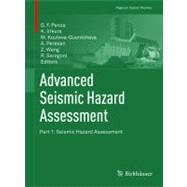Advanced Seismic Hazard Assessment
, by Panza, Giuliano F.; Irikura, Kojiro; Kouteva-guentcheva, Mihaela; Peresan, Antonella; Wang, Zhenming- ISBN: 9783034800396 | 3034800398
- Cover: Paperback
- Copyright: 6/29/2011
Issues pertaining to urban risks are a pressing concern for people involved in disasters mitigation. Development of effective mitigation strategies requires sound seismic hazard information that is commonly derived through a seismic hazard assessment (SHA). The purpose of SHA is to provide a scientifically consistent estimate of seismic hazard for engineering design and other considerations. The time is ripe to move beyond the old paradigms of the traditional Probabilistic Seismic Hazard Analysis (PSHA). Although there are many approaches available for SHA, this volume advocates the advanced methods for SHA that utilize up to date earthquake science and basic scientific principles to derive the seismic hazard in terms of a ground motion or related quantity and its occurrence frequency at a site, as well as the associated uncertainty. The purposes of this volume are to: 1) identify the issues in the current SHAs, 2) facilitate the development of a scientifically consistent approach for SHA and (3) disseminate, both in scientific and in engineering practice societies, advanced reliable tools for independent hazard estimates, like NDSHA (neo-deterministic seismic hazard assessment), which incorporates physically based ground motion models. It provides a fresh approach to seismic hazard analysis.The volume consists of two parts. The papers published in Part 1 deal with the general issues of SHA methodology review and development, as well as with recent advances in earthquake science that may have relevant implications toward an improved SHA. Part 2 contains SHA advanced case studies on regional, national and metropolitan scales. This volume is addressed to seismologists, engineers and stake-holders, and aims to contribute bridging modern interdisciplinary research and end-users, who have to cope with the problems of the earthquake risk management and natural disasters preparedness.






